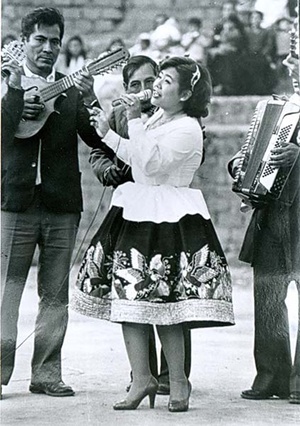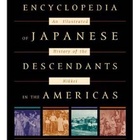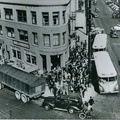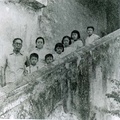The story of the Nikkei in Peru began in 1899 with the arrival of the first immigrants from Japan who worked on sugar and cotton plantations in the middle coast valleys. Many subsequently left for the cities of Lima and Callao, where they engaged in small business, such as barbershops and restaurants, during the first half of the 1920s.
Urban Migration
Between 1924 and 1936, the second wave of Japanese immigrants headed for these urban areas rather than plantations, pursuing new opportunities as merchants and small suburban farmers. Toward the 1920s, community solidarity emerged markedly in Lima. However, the strength of the ethnic community made the Nikkei population a target of jealous discrimination that increased with Japan’s military aggression in Asia, the termination of Japanese immigration in 1936, and the anti-Japanese riot of May 1940 in Lima.

Monhachi Hara’s store in Lima, Peru, ca. 1920s. (Collection of Museo Conmemorativo de la Inmigración Japonesa en el Perú)
World War II: Internment Abroad, Privation at Home
The Pacific War made the situation even worse, as the Peruvian government collaborated with the U.S. government in sending eighteen hundred civilians to North America, most of whom were deported to Japan after the war. The Nikkei who remained in Peru suffered extreme restrictions and hardships, including the confiscation of personal properties. With the lifting of wartime restrictions in 1947, the Nikkei community slowly rebuilt with the re-establishment of Japanese associations and schools.

Japanese Peruvian internees boarding ship in the United States for Japan in 1945. After the war, most Japanese Peruvians were refused reentry in Peru—only 5 percent were allowed to return. (Collection of the United States National Archives, Washington, D.C.)
Recovery and Assimilation
During the 1950s and 1960s, the Nikkei continued their course of economic recovery and assimilation into the mainstream society. Nikkei white-collar and professionals increased in number, and interracial marriage was no longer unusual. Perhaps the height of Nikkei assimilation was symbolized by the election of President Alberto Fujimori in 1990. The same decade also witnessed the large migration of Nikkei workers to Japan due to the economic challenges that gripped the nation. They didn't know what to expect.
Source:
Akemi Kikumura-Yano, ed., Encyclopedia of Japanese Descendants in the Americas: An Illustrated History of the Nikkei (Walnut Creek, Calif.: AltaMira Press, 2002), 247.
* Developed in collaboration with the Fundación Cultural Nikkei del Perú and the Museo Conmemorativo de la Inmigración Japonesa en el Perú.
© 2002 Japanese American National Museum







